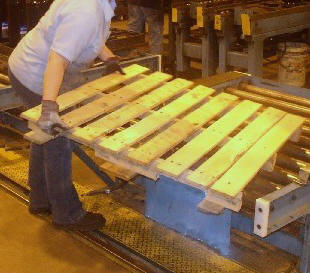 |
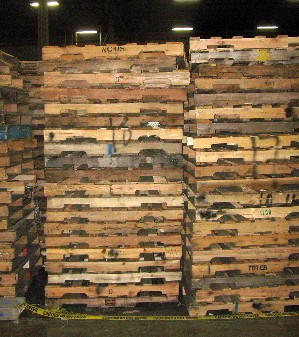 |
| Lifting heavy wood pallet | High, hard-to-reach stack of pallets |
Background
The standard wooden pallets used throughout industry can have several shortcomings:
- Heavy, especially when new and the wood is still green
- Difficult to maneuver because of the rough and high-friction surfaces
- Stacking height quickly exceeds reach
- Wood pallets can easily splinter and nails can protrude, which can create a safety concern
- Most wood pallets have closed bottoms, which preclude use of some types of powered lifts.
Ideas and Options
Plastic pallets
 |
| Open-bottom plastic pallet |
Plastic pallets provide a number of advantages over the traditional wooden pallets:
- Lighter weight (less than 20 lbs. for some types compared to 40 lbs. and more for wood)
- Smoother surfaces, which make the pallet easier to slide and maneuver
- No nails or splinters
- Nestable (some styles), reducing stack height
- Open-bottomed (some styles), allowing the use of certain types of power lifts that are less expensive than alternatives
- May be more durable and have a longer life expectancy, although this is not directly an ergonomics issue
The primary disadvantage is cost, which is a barrier for use in operations that ship pallets to customers. Normally, an operation would not ship out the plastic pallets because of the extra purchase cost, unless there is an existing return system, such as for dunnage or other permanent containers.
However, because of the value that open-bottom plastic pallets provide, an increasing number of manufacturing operations have adopted the practice of using both, with a wood pallet stacked on a plastic one. Thus, the plastic open-bottom enables the use of simpler material handling equipment within production areas. A forklift lifts the full wooden pallet off for shipping, and the plastic pallet remains on site.
Inverter
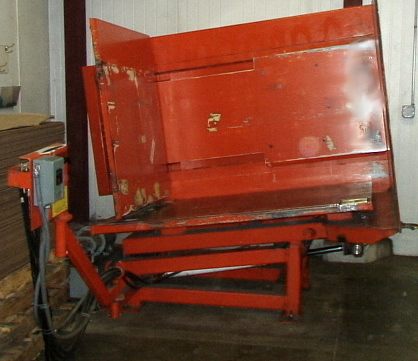 |
| Pallet inverter |
Many companies routinely use pallet inverters or up-enders to rotate pallet loads, e.g. to switch in-house pallets with shipping pallets or to remove spacers between layers of materials. These inverters can also be used to switch between plastic pallets used internally and wood shipping pallets. Pallet inverters and material up-enders are available through most suppliers of material handling equipment or general industrial supplies.
Alternatively, some operations simply put wood pallets on top of the plastic ones, using a fork lift truck to switch the two. This practice, like that of using an inverter, involves an extra step, but it does enable use of the plastic pallets for internal use.
Pallet stackers and dispensers
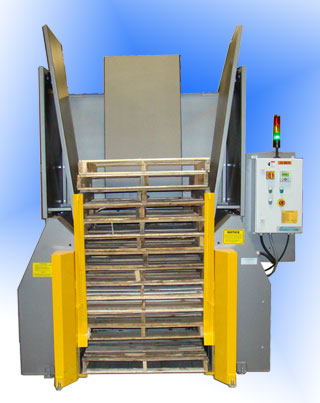 |
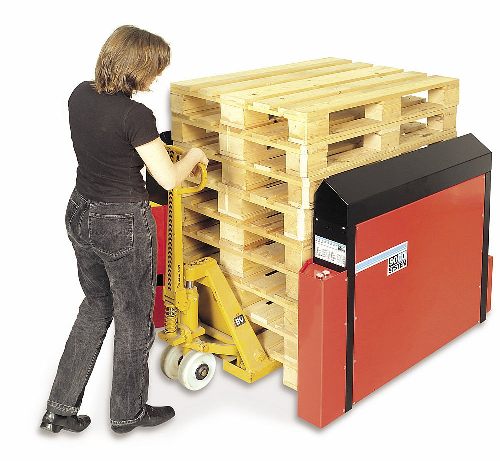 |
| www.palletdispensers.com | www.socosystem.com |
Pallet stackers can be used to reduce the amount of lifting and handling, as well as save floor space. There are many manufacturers of this equipment that can easily be found with an internet search. Stackers are necessary for automatic palletizing systems, but can be used as stand-alone devices for operations that are otherwise manual.
Sliding technique
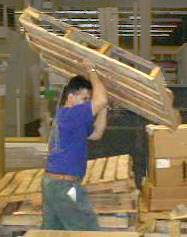 |
| High risk for injury |
A good rule of thumb is that it is almost always better to slide a load than to pick it up and put it down. Most employees instinctively slide pallets on the floor when possible because the weight and bulk are too much for most people. The technique can be adapted to transferring a pallet from one height to another by moving one corner of the pallet first and then the other. This involves some lifting, but it avoids needing to lift the complete weight of the pallet.
Sliding a pallet rather than lifting it is fairly intuitive and most employees do so without thinking. However, in some cases, including the sliding method in training classes or safety talks may be appropriate. (See slides.)
Backstop for palletizing
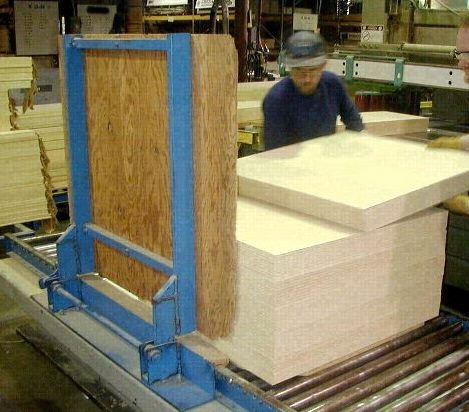 |
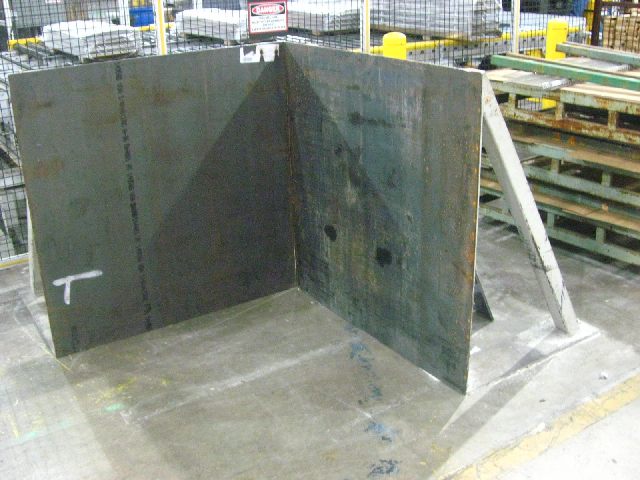 |
| Backstop for palletizing | Two-sided steel palletizing backstop |
A problem when loading pallets is placing items on the far side, which usually requires bending or needing to walking around the pallet. A particular aspect of this problem is the strain on the back when controlling the placement of a heavy item, with the added momentum as well as the awkward reaching position. A backstop provides a good solution for certain types of materials, helping align the items without needing to carefully place them.
